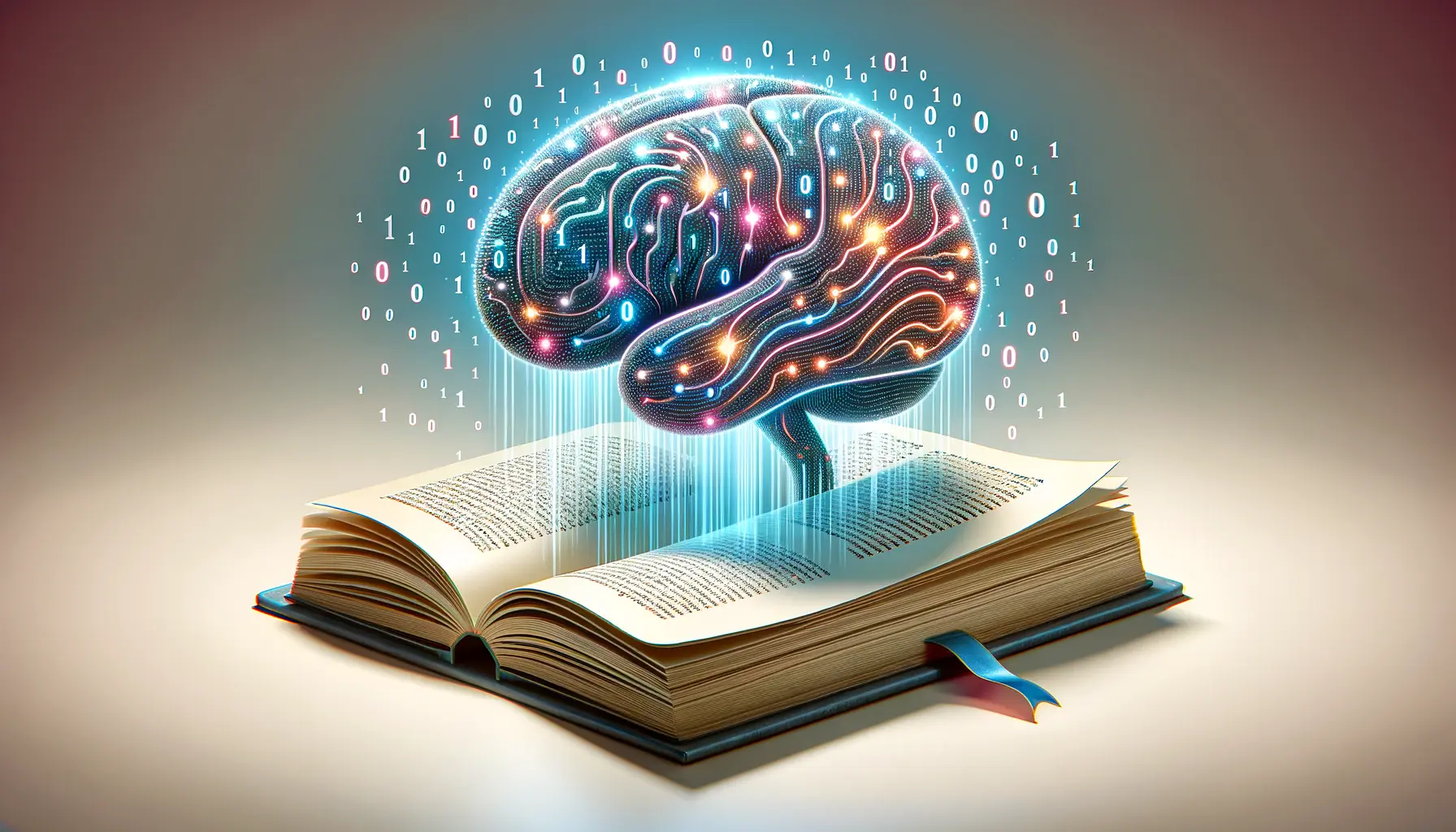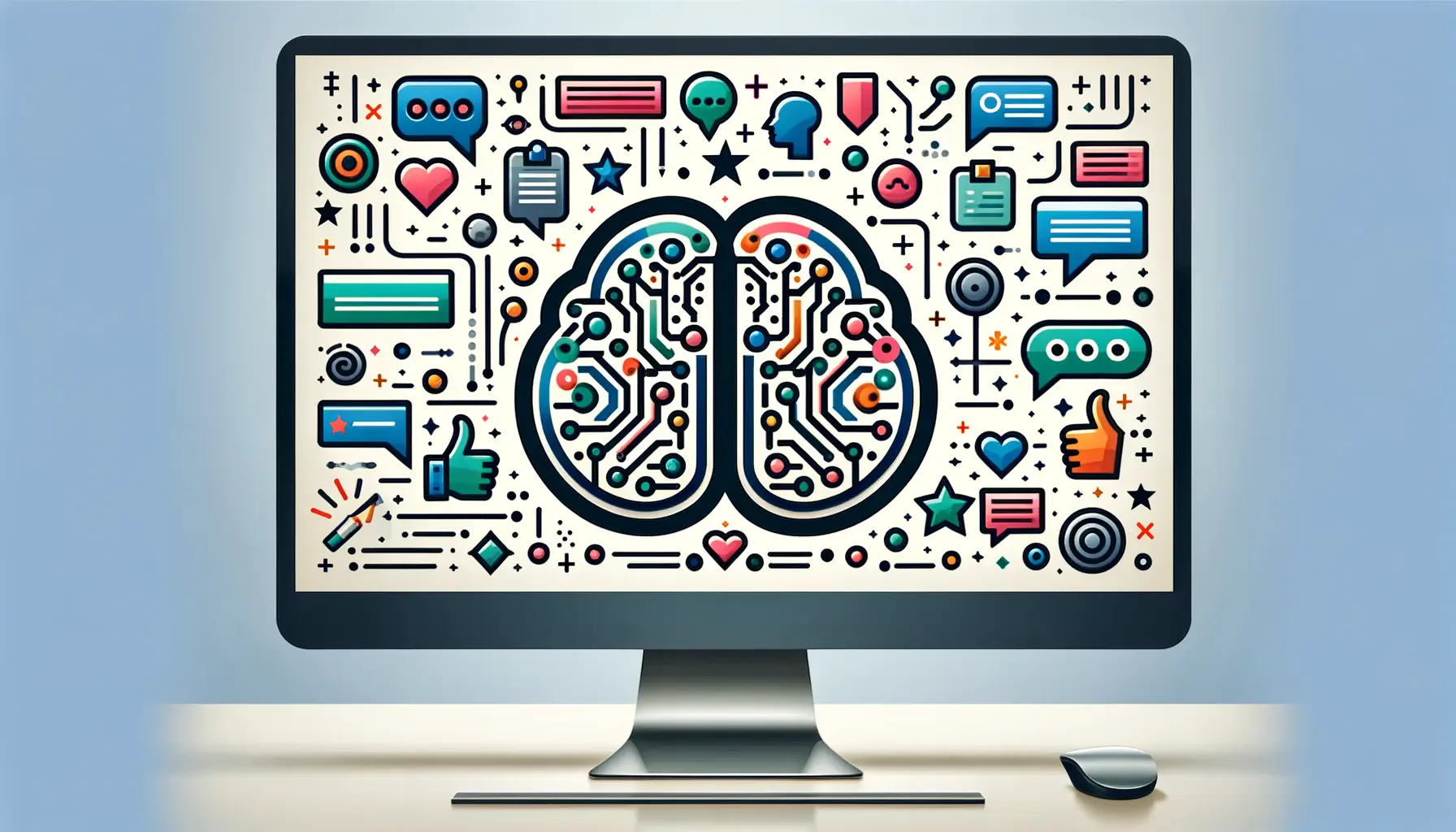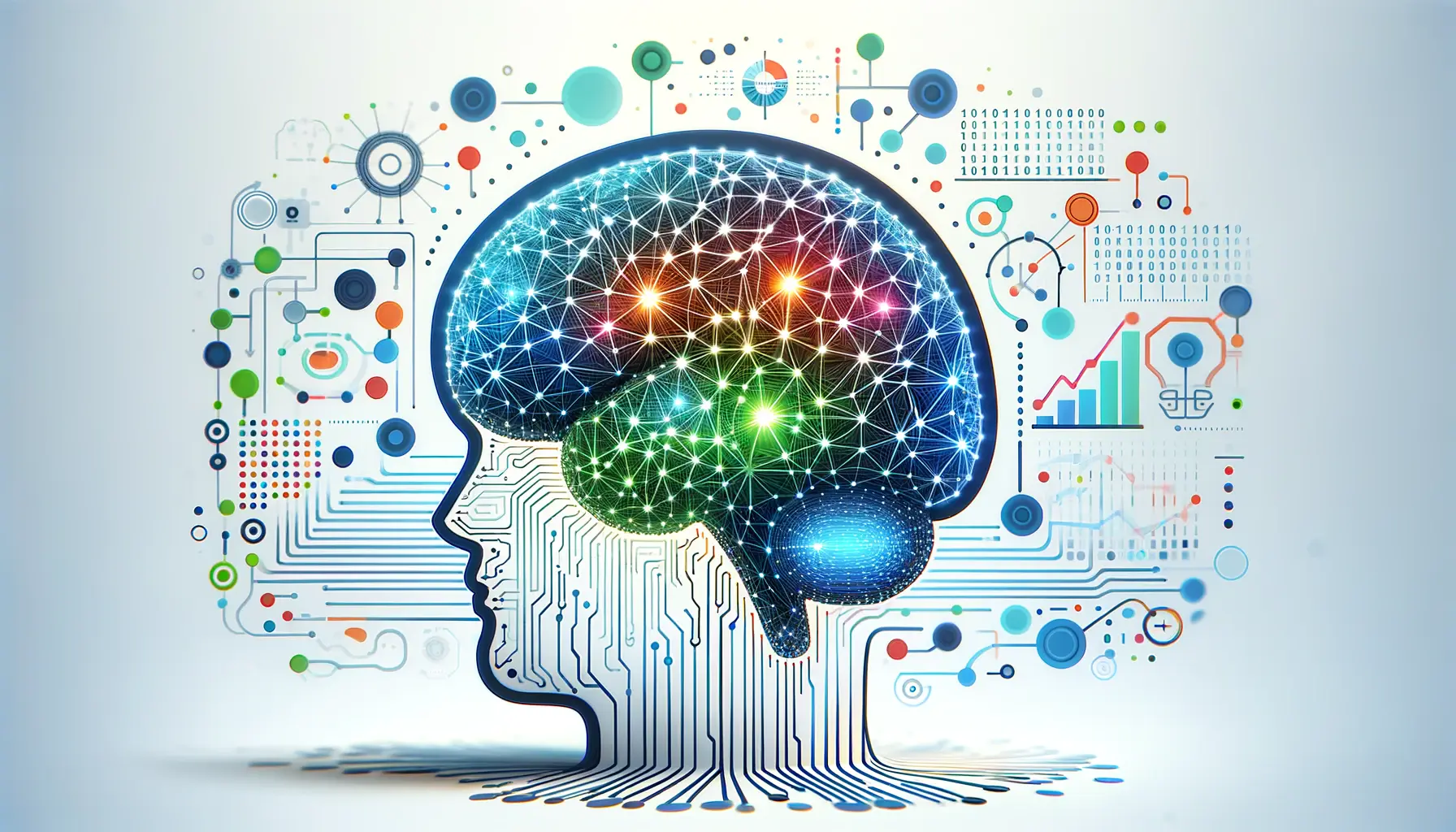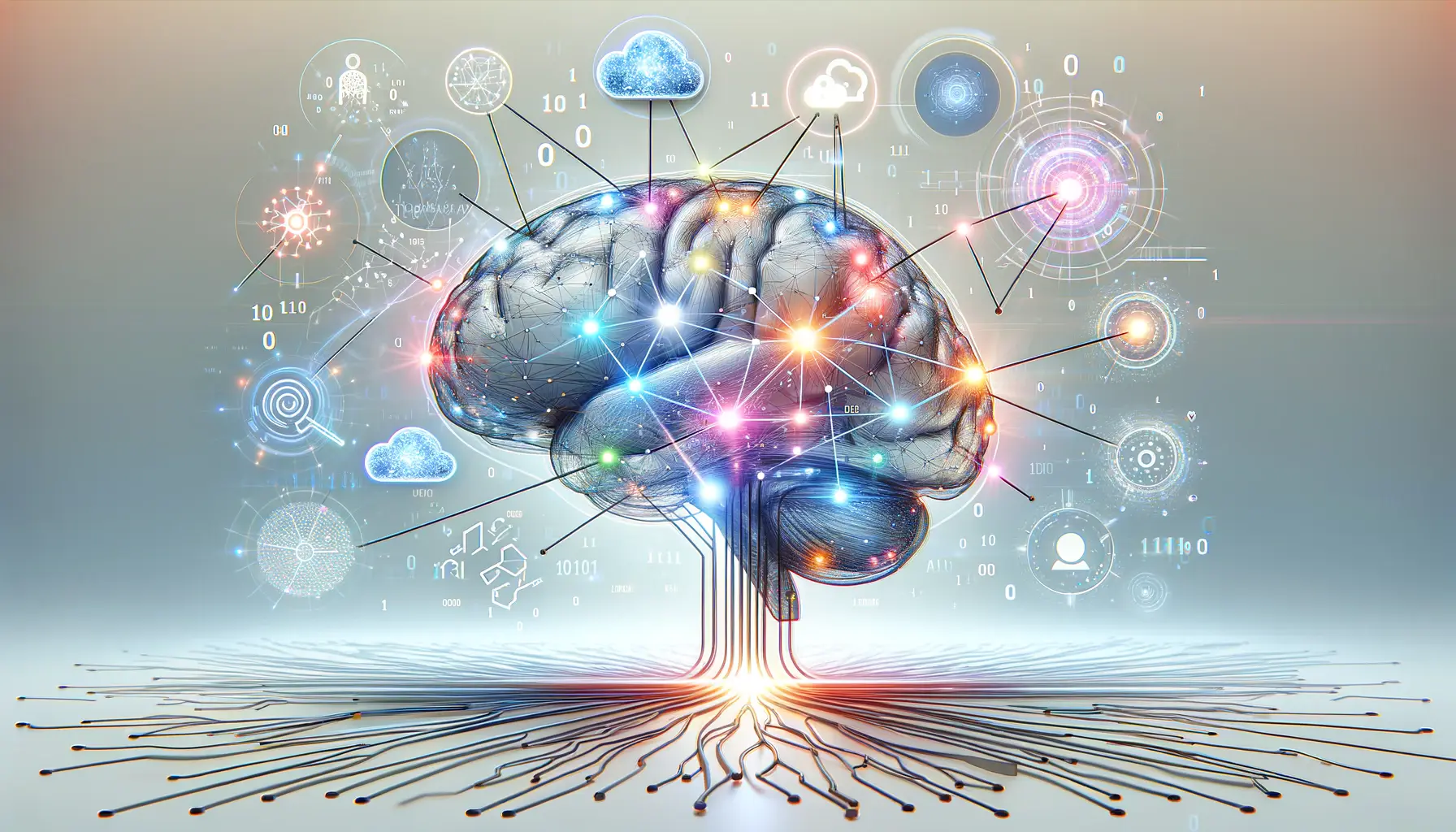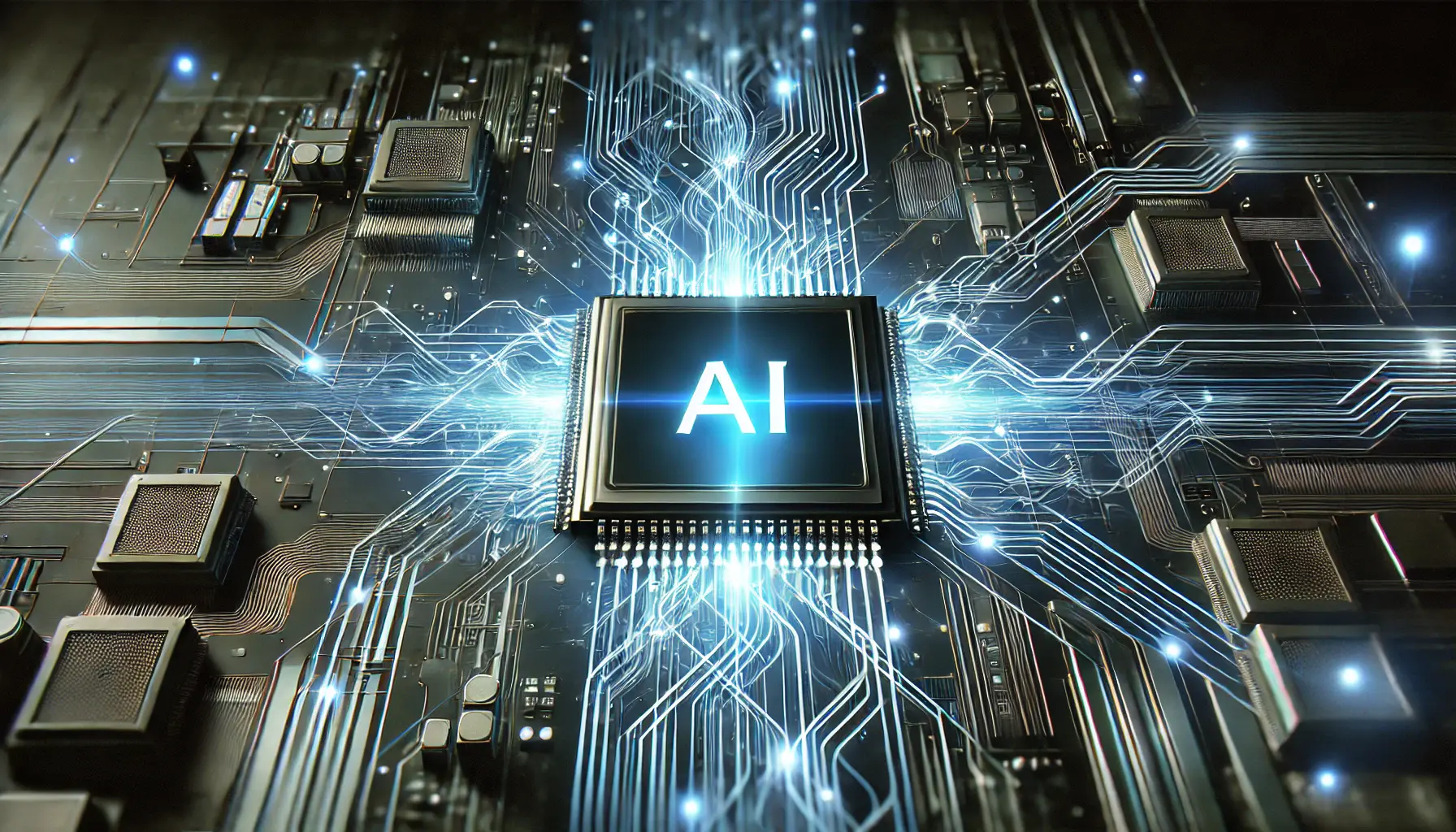The evolution of artificial intelligence has taken a significant leap forward with the development of ChatGPT 4, a model that stands at the forefront of natural language processing technology.
This iteration of ChatGPT represents a culmination of extensive research, sophisticated training methodologies, and an unparalleled understanding of language nuances.
The essence of ChatGPT 4’s training lies in its ability to learn from a vast array of text data, enabling it to understand and generate human-like text based on the input it receives.
This process is not just about feeding data into a system; it’s about teaching an AI to comprehend and interact in ways that are indistinguishably close to human communication.
The training of ChatGPT 4 is a marvel of modern technology, involving complex algorithms and a training process known as Reinforcement Learning from Human Feedback (RLHF).
This method combines machine learning techniques with human oversight, creating a feedback loop that refines the model’s responses to be more accurate, relevant, and contextually appropriate.
The goal is to produce a model that not only understands the intricacies of language but also the subtleties of human interaction, including humor, empathy, and cultural references.
The training process is both rigorous and nuanced, ensuring that ChatGPT 4 can navigate the vast and varied landscape of human communication.
- Understanding the Training Process
- Optimizing Performance Through Iterative Training
- Challenges in Training Large Language Models
- Integrating Human Feedback for Natural Conversations
- Advancements in Natural Language Understanding
- Scaling ChatGPT for Global Use
- Future Directions in ChatGPT Development
- Embracing the Future with ChatGPT 4
- ChatGPT 4 Training FAQs
Understanding the Training Process
The Foundation of ChatGPT 4’s Learning
The training of ChatGPT 4 begins with a foundation built on a diverse dataset, encompassing a wide range of topics, languages, and writing styles.
This initial step is crucial, as it provides the raw material from which the AI learns the basics of language structure, grammar, and vocabulary.
The diversity of the dataset ensures that the model is not limited in its understanding and can generate responses across a broad spectrum of subjects and contexts.
However, the mere presence of data is not enough.
The quality of the dataset plays a significant role in the effectiveness of the training.
It must be carefully curated to avoid biases, inaccuracies, and inappropriate content.
This curation process involves both automated systems and human reviewers, working together to refine the dataset and ensure it meets the high standards required for training an AI like ChatGPT 4.
Advanced Techniques in Training
Once the foundational dataset is established, ChatGPT 4 undergoes a series of advanced training techniques.
Supervised learning is one of the primary methods used, where the model is trained on pairs of questions and answers.
This approach helps the AI understand the context of inquiries and how to formulate coherent and relevant responses.
The training also involves unsupervised learning, where the model analyzes unlabelled data, learning to identify patterns and relationships within the text on its own.
Reinforcement Learning from Human Feedback (RLHF) is another pivotal aspect of ChatGPT 4’s training.
In this stage, human trainers interact with the model, providing feedback on its responses.
This feedback is used to adjust the model’s parameters, encouraging it to generate better responses in the future.
The RLHF process is iterative, with the model undergoing multiple rounds of feedback and adjustment, continually improving its accuracy and relevance.
The training of ChatGPT 4 is a testament to the power of combining advanced machine learning techniques with human insight, creating an AI that can understand and engage in human-like conversation.
Optimizing Performance Through Iterative Training
The journey of ChatGPT 4 from a nascent AI model to a sophisticated conversational agent involves not just the initial training but also continuous optimization and refinement.
This iterative training process is essential for enhancing the model’s performance, making it more adept at understanding and responding to a wide range of queries with greater accuracy and relevance.
Feedback Loops and Model Adjustments
One of the core components of ChatGPT 4’s training regimen is the implementation of feedback loops.
These loops involve collecting responses from the model, evaluating their quality, and then using this evaluation to inform further training.
This cyclical process allows for constant refinement of the model’s capabilities.
The adjustments made to the model during this phase are critical, as they help to fine-tune its understanding of language and improve its conversational skills.
- Human Evaluation: Expert reviewers assess the responses generated by ChatGPT 4, grading them on various factors such as relevance, coherence, and engagement. This human feedback is invaluable for identifying areas where the model excels and where it needs improvement.
- Automated Metrics: Alongside human evaluation, automated metrics are used to assess the model’s performance. These metrics can include measures of diversity in responses, accuracy in information retrieval, and fluency in language use. Automated assessments provide a scalable way to monitor the model’s progress and identify trends over time.
Enhancing Understanding with Diverse Data Sources
In addition to refining the model through feedback, the incorporation of diverse data sources plays a crucial role in optimizing ChatGPT 4’s performance.
By exposing the model to a wide array of text from different domains, styles, and perspectives, it gains a more nuanced understanding of language and its complexities.
This exposure is vital for ensuring that ChatGPT 4 can handle conversations on any topic with grace and accuracy.
- Expanding the Dataset: Regularly adding new and varied text data to the training set ensures that ChatGPT 4 remains up-to-date with current events, slang, and emerging topics. This ongoing expansion of the dataset helps the model stay relevant and informed.
- Targeted Learning: For areas where ChatGPT 4 may struggle or for new domains of knowledge, targeted learning sessions are conducted. These sessions focus on specific subjects or types of interactions, allowing the model to develop expertise in areas that are critical for its users.
Iterative training and the integration of diverse data sources are key to the continuous improvement of ChatGPT 4, ensuring it remains a cutting-edge tool for natural language processing.
Challenges in Training Large Language Models
Training large language models like ChatGPT 4 is an ambitious endeavor that comes with its unique set of challenges.
These challenges range from technical hurdles to ethical considerations, each requiring careful attention and innovative solutions.
Understanding these challenges is crucial for appreciating the complexity behind creating AI models that are not only powerful but also responsible and fair.
One of the primary technical challenges is the sheer scale of data processing required.
ChatGPT 4 learns from vast amounts of text data, necessitating significant computational resources for training and refinement.
This process involves not just the initial model training but also ongoing updates and optimizations to maintain its performance and relevance.
Data Quality and Bias Mitigation
Ensuring the quality of the training data is another significant challenge.
The data must be diverse and representative to avoid biases that could skew the model’s responses.
Moreover, the data needs to be free from inaccuracies and inappropriate content, which requires extensive review and filtering processes.
- Identifying and removing biases in the dataset to ensure fairness and neutrality in responses.
- Curating the data to exclude misleading, harmful, or offensive content, which demands continuous vigilance and refinement.
Computational Resources and Environmental Impact
The computational demands of training ChatGPT 4 also pose challenges, not just in terms of the hardware and energy required but also concerning the environmental impact.
The energy consumption associated with training large AI models has drawn scrutiny, prompting efforts to make the process more efficient and sustainable.
- Optimizing algorithms to reduce computational load without compromising the model’s performance.
- Exploring sustainable energy sources for data centers where the models are trained, aiming to minimize the carbon footprint of AI development.
Ethical Considerations and Responsible Use
Beyond technical challenges, ethical considerations are paramount in the development of ChatGPT 4.
The potential for misuse, privacy concerns, and the impact on employment are issues that developers must address to ensure the technology benefits society as a whole.
- Implementing safeguards against misuse, including filters for harmful content and mechanisms to prevent the generation of misleading information.
- Engaging with stakeholders, including ethicists, policymakers, and the public, to guide the responsible development and deployment of AI technologies.
Addressing the challenges in training large language models like ChatGPT 4 is essential for harnessing their potential while mitigating risks and ensuring their benefits are equitably distributed.
Integrating Human Feedback for Natural Conversations
The integration of human feedback into the training process of ChatGPT 4 is a critical step towards achieving natural, human-like conversations.
This approach, known as Reinforcement Learning from Human Feedback (RLHF), bridges the gap between the theoretical understanding of language and the practical, nuanced use of language in everyday communication.
The involvement of human trainers not only refines the model’s responses but also imbues it with an understanding of the subtleties and complexities of human interaction.
Human feedback plays a pivotal role in teaching ChatGPT 4 about the context, tone, and appropriateness of responses.
It helps the model navigate the intricacies of conversation, from recognizing humor to expressing empathy, ensuring that interactions are not just accurate but also engaging and meaningful.
Role of Human Trainers
Human trainers work closely with ChatGPT 4, providing it with feedback on its responses.
This collaboration involves several key activities:
- Evaluating the relevance and accuracy of the model’s answers, guiding it towards more precise and contextually appropriate responses.
- Assessing the tone and style of responses to ensure they match the intended sentiment and appropriateness for the conversation.
- Identifying areas where the model may lack understanding or where it might benefit from additional training on specific topics or conversational skills.
Feedback Loops and Continuous Learning
The feedback provided by human trainers is incorporated into the model through a process of continuous learning.
This process allows ChatGPT 4 to adapt and improve over time, refining its ability to engage in natural, human-like conversations.
The feedback loops are essential for:
- Adjusting the model’s parameters based on human evaluations, fine-tuning its performance to better align with human expectations.
- Introducing new examples and scenarios into the training data, expanding the model’s experience and understanding of diverse conversational contexts.
- Enhancing the model’s ability to generate responses that are not only technically accurate but also contextually rich and emotionally resonant.
The integration of human feedback into the training of ChatGPT 4 exemplifies the synergy between artificial intelligence and human expertise.
This collaborative approach ensures that the model can conduct conversations that are not just informative but also genuinely engaging, reflecting the depth and diversity of human communication.
The success of ChatGPT 4 in achieving natural, human-like conversations is significantly attributed to the integration of human feedback, highlighting the importance of human-AI collaboration in the development of conversational agents.
Advancements in Natural Language Understanding
The development of ChatGPT 4 represents a significant leap forward in the field of natural language understanding (NLU).
This progress is not just about the model’s ability to generate text but its deep comprehension of language nuances, context, and the intent behind words.
The advancements in NLU have enabled ChatGPT 4 to interpret and respond to a wide array of human communications more effectively than ever before, setting a new benchmark for AI-driven interactions.
At the heart of these advancements is the model’s sophisticated architecture, which allows it to process and analyze text at an unprecedented scale.
This capability is crucial for understanding the complexities of human language, including idioms, metaphors, and cultural references.
By mastering these aspects, ChatGPT 4 can engage in conversations that feel natural and intuitive to users.
Understanding Context and Intent
One of the key achievements of ChatGPT 4 in NLU is its enhanced ability to grasp the context and intent behind user inputs.
This understanding allows the model to generate responses that are not only relevant but also appropriately tailored to the conversation.
Factors contributing to this capability include:
- Advanced algorithms that analyze the semantic relationships between words and phrases, enabling the model to interpret meaning beyond the literal text.
- Improved memory mechanisms that allow ChatGPT 4 to maintain coherence over longer conversations, remembering and referencing previous exchanges accurately.
Emotional Intelligence and Empathy
Beyond understanding the literal meaning of text, ChatGPT 4 has made strides in emotional intelligence and empathy.
This aspect of NLU enables the model to recognize and respond to the emotional tone of user inputs, facilitating more engaging and supportive interactions.
Key developments in this area include:
- The incorporation of sentiment analysis techniques, allowing ChatGPT 4 to detect and mirror the emotional state of the user, whether it’s excitement, frustration, or curiosity.
- Training on diverse datasets that include examples of empathetic communication, helping the model learn how to respond in ways that demonstrate understanding and care.
The advancements in natural language understanding showcased by ChatGPT 4 mark a significant milestone in AI development.
These improvements not only enhance the model’s ability to communicate but also deepen the connection between humans and machines, making AI more accessible and useful in everyday life.
The strides in natural language understanding achieved by ChatGPT 4 underscore the evolving relationship between humans and AI, where machines are not just tools but partners in communication.
Scaling ChatGPT for Global Use
The ambition to make ChatGPT 4 a universally accessible tool for users around the globe presents a unique set of challenges and considerations.
Scaling an AI model of this complexity for global use involves more than just technical enhancements; it requires a nuanced understanding of linguistic diversity, cultural sensitivities, and the need for inclusivity.
This global perspective is crucial for ensuring that ChatGPT 4 can serve a wide audience, providing valuable assistance and insights regardless of geographical boundaries.
Addressing the technical demands of scaling involves optimizing the model’s performance to ensure it remains responsive and reliable, even as the number of users grows.
This task is compounded by the need to maintain the model’s accuracy and conversational quality across different languages and dialects, making it a multifaceted challenge.
Language and Cultural Adaptation
A key aspect of scaling ChatGPT 4 for global use is its adaptation to multiple languages and cultures.
Achieving this level of linguistic versatility requires:
- Extensive training on datasets that include a wide range of languages, ensuring the model can understand and generate text in multiple linguistic contexts.
- Incorporating cultural nuances and idiomatic expressions into the training data, enabling ChatGPT 4 to engage users in a manner that feels natural and respectful of their cultural background.
Infrastructure and Accessibility
Ensuring that ChatGPT 4 is accessible to users worldwide also involves significant infrastructure considerations.
Key initiatives in this area include:
- Deploying the model across a distributed network of servers to reduce latency and improve response times for users in different parts of the world.
- Implementing scalable cloud technologies that can adjust resources dynamically based on demand, ensuring consistent performance during peak usage periods.
The effort to scale ChatGPT 4 for global use is a testament to the commitment to democratize access to advanced AI technology.
By addressing the linguistic, cultural, and technical challenges of scaling, ChatGPT 4 is poised to become a truly global tool, breaking down barriers to information and communication for people everywhere.
The global scaling of ChatGPT 4 highlights the importance of inclusivity and accessibility in the development of AI technologies, ensuring that the benefits of such innovations are shared widely across different societies and cultures.
Future Directions in ChatGPT Development
The journey of ChatGPT 4 represents a significant milestone in the field of artificial intelligence, but it also marks the beginning of a new era in AI development.
As we look to the future, the potential for further advancements in ChatGPT and similar AI technologies is vast.
These future directions not only promise to enhance the capabilities of conversational AI but also to expand their applications, making AI an even more integral part of our daily lives.
The continuous evolution of ChatGPT will likely focus on several key areas, including improving the model’s understanding of complex contexts, enhancing its ability to generate more creative and nuanced responses, and ensuring its ethical use in society.
These developments will be driven by ongoing research, technological innovations, and feedback from the global community of users and developers.
Enhanced Contextual Understanding
Future versions of ChatGPT will aim to achieve even greater levels of contextual understanding, enabling the AI to grasp the subtleties of human communication more effectively.
This will involve:
- Advanced algorithms capable of deeper semantic analysis, allowing for a more nuanced interpretation of language.
- Improved memory mechanisms that enable the AI to maintain context over longer conversations, providing responses that are coherent and contextually relevant.
Creative and Nuanced Responses
Another area of focus will be on enhancing the model’s creativity and its ability to generate responses that are not only accurate but also rich in variety and nuance.
This will include:
- Incorporating more diverse datasets into the training process, exposing the AI to a wider range of writing styles and perspectives.
- Developing techniques that encourage the generation of original content, enabling ChatGPT to offer unique insights and creative solutions.
Ethical AI and Societal Impact
As ChatGPT becomes more integrated into our lives, ensuring its ethical use and positive societal impact will be paramount.
Future development efforts will need to address:
- Robust mechanisms for preventing misuse and ensuring the privacy and security of users’ data.
- Guidelines for the responsible deployment of AI, including transparency in AI decision-making processes and the mitigation of biases.
The future of ChatGPT and conversational AI is filled with possibilities, from transforming how we interact with technology to revolutionizing fields such as education, healthcare, and customer service.
As we continue to explore these frontiers, the focus will remain on creating AI that is not only more intelligent and capable but also more aligned with human values and ethical principles.
Embracing the Future with ChatGPT 4
The exploration of ChatGPT 4’s training, its challenges, and the innovative solutions employed to overcome these hurdles illuminates the path forward for artificial intelligence.
As we stand on the brink of new advancements in AI, the journey of ChatGPT 4 offers valuable insights into the potential and promise of conversational AI technologies.
The development of ChatGPT 4 is not just a technical achievement; it represents a significant step towards creating AI that can understand, learn from, and interact with the world in ways that were previously unimaginable.
Key Takeaways from ChatGPT 4’s Evolution
The training of ChatGPT 4, with its emphasis on natural language understanding and the integration of human feedback, highlights the importance of blending technical prowess with the nuances of human communication.
This approach has not only improved the model’s ability to engage in meaningful conversations but also underscored the critical role of ethical considerations in AI development.
The challenges faced and overcome during the training process reflect a commitment to advancing AI in a responsible and inclusive manner.
Looking Ahead: The Future of Conversational AI
As we look to the future, the ongoing evolution of ChatGPT and similar technologies promises to further bridge the gap between humans and machines.
The potential applications of conversational AI are vast, ranging from enhancing personal and professional productivity to solving complex societal challenges.
The key to unlocking these possibilities lies in continued innovation, ethical AI practices, and a deep commitment to understanding the intricacies of human language and interaction.
- Advancements in AI will continue to be driven by the dual goals of enhancing technical capabilities and ensuring these technologies are used for the benefit of society.
- The integration of AI into various sectors will necessitate ongoing dialogue between developers, users, and policymakers to ensure that AI technologies are deployed in ways that are ethical, equitable, and beneficial to all.
- The future of ChatGPT and conversational AI will likely see these technologies becoming even more integrated into our daily lives, acting as assistants, educators, and companions in an increasingly digital world.
In conclusion, the development of ChatGPT 4 marks a significant milestone in the journey towards creating AI that can truly understand and interact with humans on a deep level.
As we continue to explore and expand the capabilities of conversational AI, the lessons learned from ChatGPT 4 will undoubtedly serve as a foundation for future innovations.
The potential of AI to transform our world is immense, and with ChatGPT 4, we are one step closer to realizing that potential.
ChatGPT 4 Training FAQs
Explore commonly asked questions about ChatGPT 4’s training process, capabilities, and more.
ChatGPT 4 is built on GPT-3.5, optimized for dialogue through Reinforcement Learning with Human Feedback, ensuring nuanced conversational abilities.
Yes, it can understand and generate responses in multiple languages, with performance varying by the data’s quality and quantity.
ChatGPT 4 processes text input using advanced machine learning, generating human-like responses based on its extensive training data.
While highly advanced, ChatGPT 4 may occasionally produce errors in understanding or generating contextually appropriate responses.
Training requires expertise in machine learning and NLP. OpenAI provides a pre-trained model, with further training enhancing its capabilities.
ChatGPT 4 introduces improvements in understanding and generating text, offering more nuanced and context-aware responses than its predecessors.
Maximize ChatGPT 4’s potential by providing clear, context-rich prompts and utilizing its feedback loop for continuous improvement.
To manage data controls, navigate to ChatGPT’s settings, where you can adjust chat history and model training preferences.
